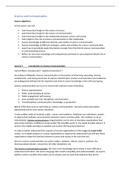Science and Communication
Course objectives
In this course, you will:
Gain theoretical insight in the nature of science
Gain theoretical insight in the nature of communication
Gain theoretical insight in the relationship between science and society
Gain insight in the role of science communication in this relationship
Acquire knowledge of different theories and models of science communication
Acquire knowledge of different strategies, media and activities for science communication
Learn how to practically apply theoretical concepts from the field of science communication
in communicating science
Reflect on your own knowledge and competencies pertinent to your projected (ideal) role as
science communicator
Lecture 1 Introduction to Science Communication
Carina Pittens: Assistant prof. “patient involvement”?
According to Wikipedia: Science communication is the practice of informing, educating, sharing
wonderment, and raising awareness of science-related topics. Science communicators and audiences
are ambiguously defined and the expertise and level of science knowledge varies with each group.
Science communication can occur in many forms and have several functions:
1. Science popularization
2. Public understanding of science
3. Public engagement with science
4. Intra-scientific but inter-disciplinary communication
5. Transdisciplinary communication: knowledge co-production
Before 1990, there was no such thing as ‘science communication’, but only science journalism,
popularizing science and science education.
3 main entities (units of analysis): public, science and mediators. Mediators are institutions, people,
or objects that facilitate communication between science and the public. The mediator is not an
intermediate. Science communicators (organizations) can be seen as boundary organizations that
exist at the interface of different social worlds (The scientific world & the world of public sphere). It
exists in the middle and helps to stabilize and nurture the boundary/interface.
In order to better understand the response of scicom organizations to the (suggested post-truth)
society, an in-depth analysis on various organizations is required (to understand how and why these
organizations shape the interface between science and society in the way they do).
Actors in science communication are policy makers, students, citizens, doctors, patients, the
pharmaceutical industry, researchers (of other disciplines), etc.
The science communication paradox: We have more knowledge which makes it more difficult to
understand each other. We need a language that is both compelling and understandable, we need a
platform where scientific information can be shared, and we need intermediaries that do the
,translation work. Due to the complexity of science, the public is now isolated and there is no
common language.
Enrichment, education, empowerment = 3 E’s of Science communication.
“positivistic view on science”
Some other slides left but she did not discuss these in the lecture:
Building blocks of science communication:
1. Content of science communication
a. Results of research, (wishes for/barriers to) scientific development, Gamma/alpha
sciences = politics, this course, social sciences, languages, etc
2. Communication approach
a. PUS = public understanding of science (lecture), transaction (is more of a two-way
system (dialogue)). We don’t know what we will reach in this discussion. There is an
aim of the discussion but no certain end (opinion).
3. Actors in science communication
a. Policy makers, family, citizens, patients, doctors, industry, researchers
4. Activities in science communication
a. Dissemination (verspreiding), consultation, dialogue
5. Motives in science communication
a. Creating support, enriching knowledge, economical/political/cultural/democratic
6. Aimed effects of science communication
a. Support, democracy, economy, culture, behavior, scientific progress
7. Functions for science communication
a. Informative, persuasive, relational (improve patient-relationship), interpretative,
being critical
Lecture 2 What is science?
Pim Klaassen (Athena institute)
, Science communication aims for better understanding.
We live in a post-truth society. Post-truth = objective truth doesn’t exist anymore.
The construction of knowledge requires infrastructure, effort, ingenuity and validation structures
according to STS detailed accounts.
Multiple views on what is science co-exist. If you communicate science, your communication will
manifest one such particular view on what science is. Reflection on the nature of science can help
you when thinking about communicating about science. During this lecture, different canonical
answers to the question what is science will be introduced.
After this lecture you need to be able to:
Name 3 different views on science (Logical positivism, falsification(ism), constructivism)
Explain the distinctive features of each of these views
Identify manifestations of these views in communication in or about science
Content of the lecture:
1. The colloquial (conventional) image of science
I. Logical positivism
II. Critical rationalism / falsificationism (Popper)
2. Constructivism
3. Ways of looking at science and ways of communicating in and about science
The colloquial image of science: Science consists of the systematic combination of empirical
observation (induction*) and logical deduction, which produces reliable knowledge about the world.
*Induction = all tables have 4 legs (conclusion upon singular statements going to universal
statements) THAT is called induction.
Autonomy
Scientific research and its output are not influenced by external factors (e.g. policy makers, money).
Neutrality
Scientists are not led by personal views interests or ideologies in their research choices or data
interpretations.
Factuality
Values and norms do not play a role in scientific theories.




